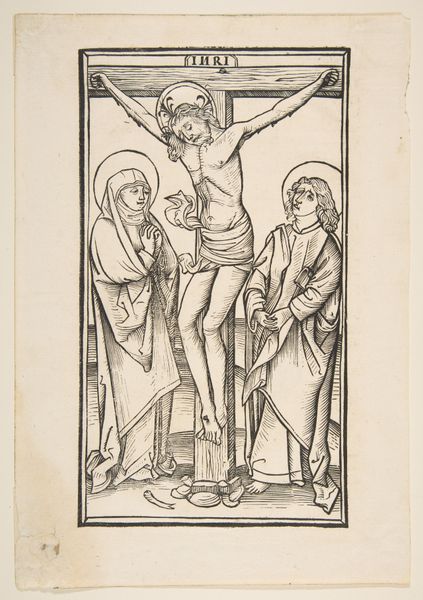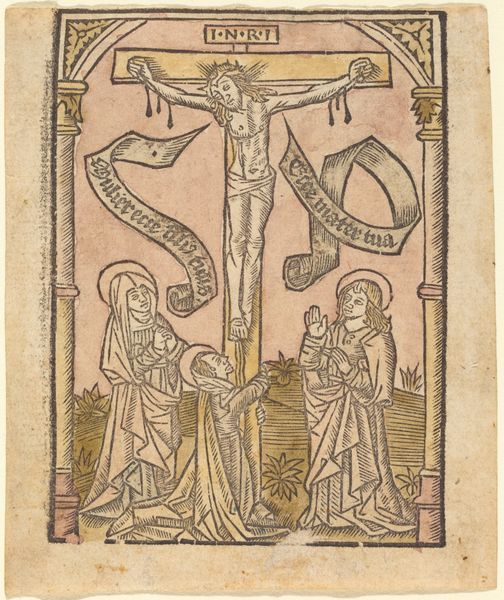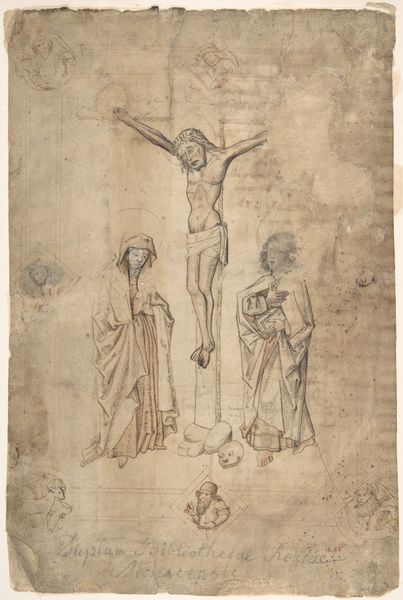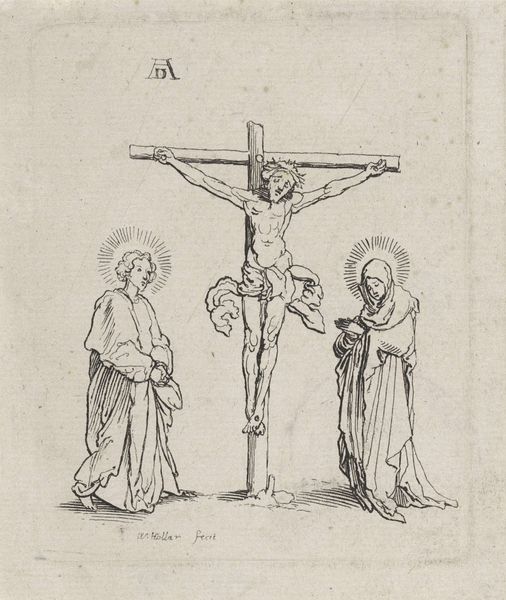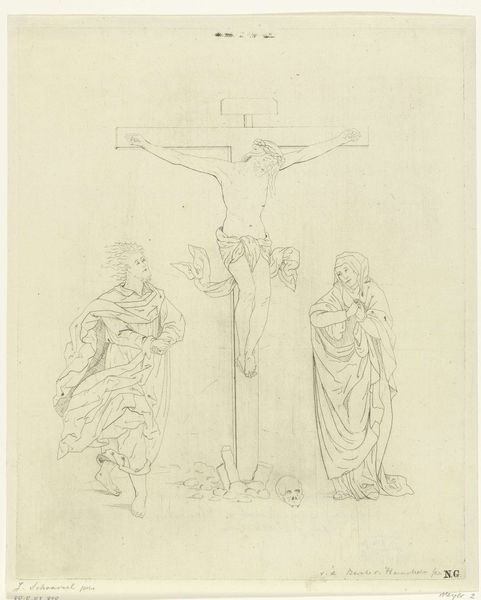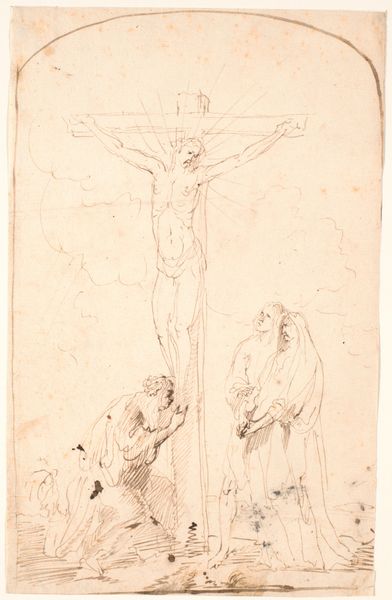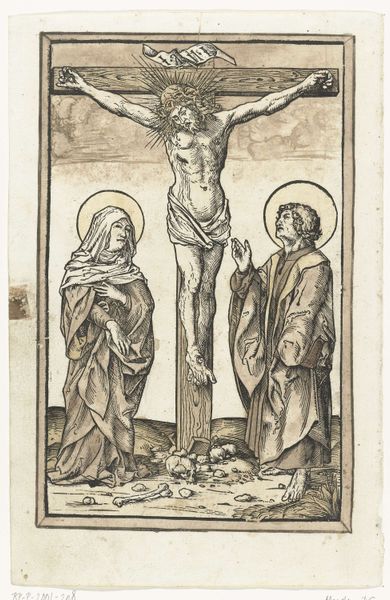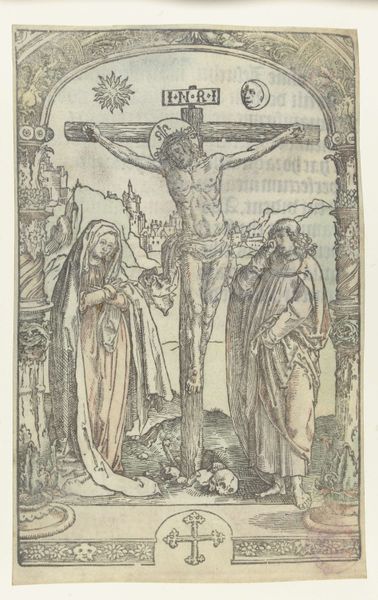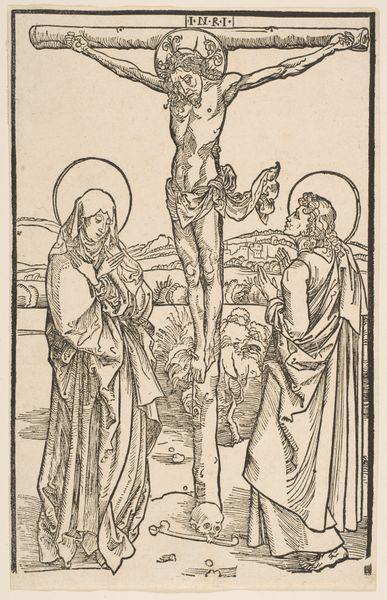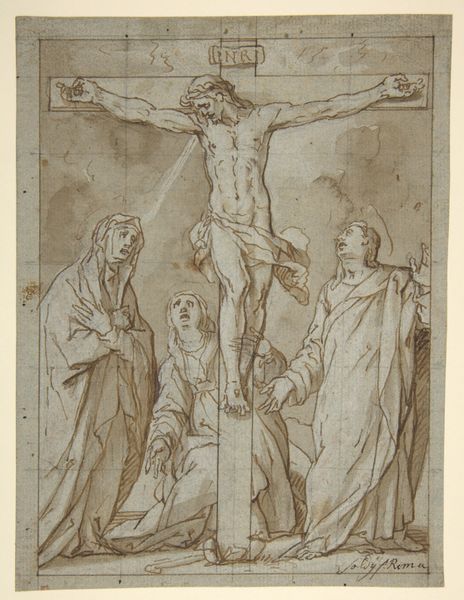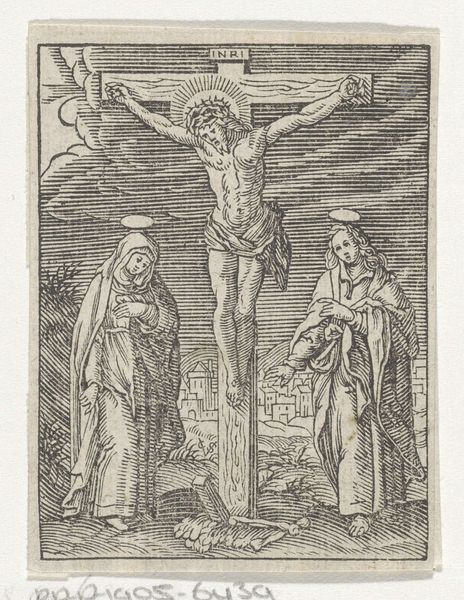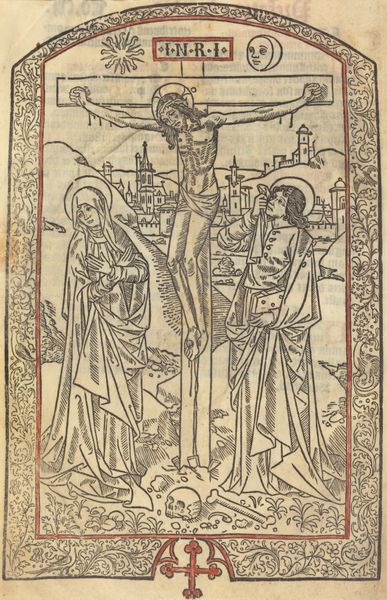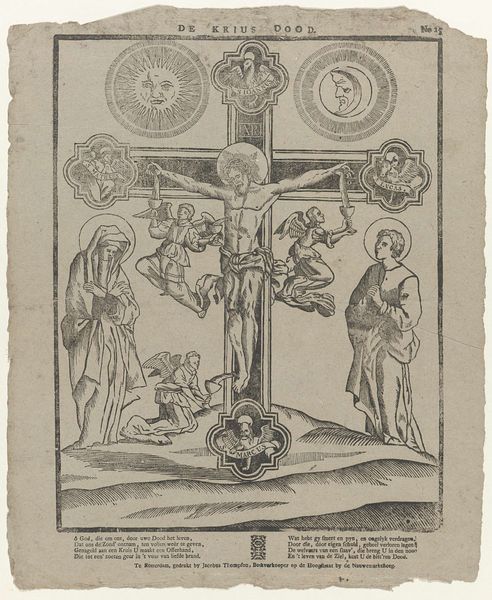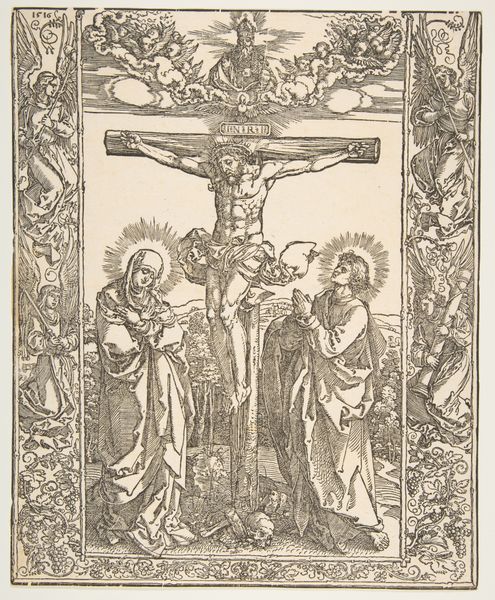
Christ on the Cross, with the Virgin and Saint John 1400 - 1500
0:00
0:00
drawing, ink
#
drawing
#
medieval
#
figuration
#
ink
#
cross
#
history-painting
#
virgin-mary
#
christ
Dimensions: sheet: 9 7/16 x 6 15/16 in. (24 x 17.7 cm)
Copyright: Public Domain
Editor: This ink drawing, "Christ on the Cross, with the Virgin and Saint John," likely created sometime between 1400 and 1500 by an anonymous artist, is striking in its stark simplicity. The black lines against the aged paper create a somber, reflective mood. What do you see when you examine the composition? Curator: I observe first the pronounced linear quality. The artist relies almost entirely on line to define form and space, and the relatively uniform thickness of the lines flattens the image, minimizing depth. Consider how the parallel lines used for shading on the bodies contribute to this effect, reducing volume to mere surface articulation. What compositional elements guide your eye? Editor: Well, my eye is drawn to the central figure of Christ on the cross. The Virgin Mary and Saint John flank him, creating a balanced, symmetrical composition. But how does the rectangular frame influence how we view the piece? Curator: The frame serves as a deliberate boundary, containing the narrative and further emphasizing the two-dimensional nature of the work. Notice, too, the stylized halos. These are not attempts at realistic representation but symbolic indicators of holiness. The halos become almost abstract geometric shapes that enhance the visual rhythm. Are the figures successful at conveying emotion? Editor: Yes, though subtly. The Virgin's bowed head and the saint’s upturned gaze suggest grief and supplication, though rendered with a certain degree of stylization that is common in Medieval art. It seems less about individual expression and more about archetypal representation. Curator: Precisely. It's this careful consideration of line, form, and symbolic representation within the defined space that gives the artwork its power, independent of any external context. It invites reflection on the essential visual vocabulary employed. Editor: I hadn't considered how the deliberate flattening and the interplay of lines amplify the overall solemnity. Curator: Indeed, studying its intrinsic elements reveals a deliberate orchestration of form that transcends the narrative itself. A rewarding approach to further understand how the content delivers meaning.
Comments
No comments
Be the first to comment and join the conversation on the ultimate creative platform.
